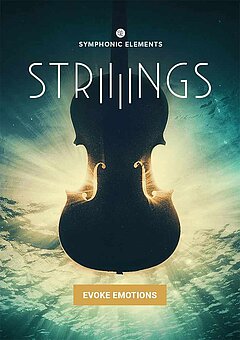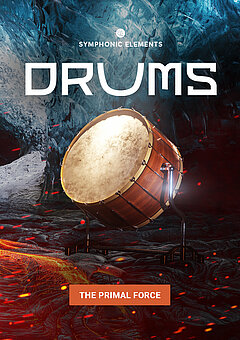How to Stand Out As a Film and Game Composer
Everything you need to begin delivering above and beyond the competition, both within and outside of music
JULY 4TH, 2021
The fundamentals
Nailing the core principles behind effective composition for visual media is vital, and every client will assume you already know them inside out. These include how to write an effective melody, creating harmonic and chord progressions, perfectly synced rhythms and a variety of other compositional functions. But there’s a whole lot that needs to happen before you get there.
Number one is to be able to effectively analyze other pieces of music. You’ll be doing this constantly as a film or game composer, because clients will give you musical references they’d like you to mimic (and if they don’t, request them — they’ll save you a lot of time if the style is quite different from what you hear in your head!). This means breaking down chord content, melody and style so that you can reuse them without explicitly copying anything. While it largely comes from practice, one of the best ways to deliberately work on this skill is to attempt near-perfect recreations of songs from different genres — this is incredibly time-consuming, but your production skills will skyrocket. No need to do the whole song, you can simply focus on the most challenging 30 seconds or something of that nature.
Besides knowing the musical references inside and out plus being able to replicate them at will, you have to master the impression of ‘size’ — switching between gentle, lyrical and intimate to expansive and powerful. For more on mastering this huge style, check out our article Epic Drums for Video Game and Film Soundtracks; it would be an oversimplification to say all soundtracks require this, but if you want to hold your own as a media composer it must be part of your arenal. If you want a tool that makes it nearly effortless to create epic drums, you can also try out Symphonic Elements DRUMS for free!
There are many more skills necessary to distinguish yourself from other composers, of course, especially as their profile increases (along with your own). For those, you’ll need to be well-versed in as many divergent skills as possible.
Become a master of ‘genre blending’
There are times when Hans Zimmer’s string ostinatos, Drake’s beats, Skrillex’s sound design and Beethoven’s woodwinds could all work perfectly in the same part of a game or film — sometimes the best approach is to combine them all together! As long as everything still fits contextually and the client is happy, there’s no reason not to. Your ability to do this is dependent on developing excellent taste, which you ‘ll naturally get by writing a lot and listening to different styles even more.
It’s not just composers’ and producers’ styles you can blend in either: world instruments and rhythms are excellent tools to have at your disposal. You may associate the ud with Persia or the banjo with the rural United States (or Ireland), but there’s no rule saying instruments must be tied to geographical locations. When done subtly (and especially with multiple different rhythms and instruments), those things can fly under the radar for the audience. Few composers attempt this, so if you become proficient at it you’ll immediately stand out.
A side benefit of this is that the more different approaches you become familiar with, the faster you’ll be able to write and the more nuanced and enjoyable your music will be for the listener. You become more fluid and versatile, and your clients will love you for it! Curate a diverse set of playlists and add to them frequently, keeping them close at hand when you need direction during the writing and production process.
Always present multiple options
You may be resistant to this at first — it can seem like you’re doing more work for the same project fee, but it will consistently save you a lot of time and increase your client satisfaction in multiples.
If your instinct is to write the music to an entire scene first to give your client your full idea, they may love it or hate it. Hate means you start from scratch! Instead, write part of the scene, maybe less than 30 seconds, but with three different approaches. Send all three together with a brief explanation of why you think each will work, asking which approach they want you to continue with. If they like more than one, go with just one and suggest you use the extra somewhere else, saving yourself inspiration and perspiration later. By getting feedback early and often while communicating briefly, clients feel in control, cared for and confident in your abilities. Everyone wins!
Should you choose to go this route, make it very clear that you’re doing this so you can deliver a better final soundtrack, and set the expectation that this style of communication will be the norm. Also, make sure they know they’re not listening to the finished version when you’re sending over a demo!
While you don’t have to use this approach, keep this in mind: one day you’ll have a piece you think is perfect, then you send it over only to hear back: “What else you got?” (This happens far more often than you might think!)
Upgrading your tools
Superior composing and production skills will always beat superior tech to a point ... but between 2 evenly matched composers, the one with the better sound quality wins out every single time. It’s valuable to know which tools are important for sound quality and which are on a lower tier.
First and foremost, assuming you do any sort of orchestral work, is your sample library collection. More and better tools means more opportunities to create alternate sounds and even layer instruments on top of each other, such as combining string libraries together or doubling up drum sounds with similar ensembles. This gives you the ability to create soft, quiet passages at will, all the way up to huge epic strings and percussion for climactic moments and trailers with plugins like UJAM’s Symphonic Elements.
Sample libraries are still important if you have the opportunity to record live players. Recording comes once all music cues are finished, and in the meantime you must present a convincing mockup of your work for the client to happily give the okay for you to finish it. This is especially true if you strictly do orchestral music — if no live players are involved and you’re synthesizing a lot of the soundtrack, you’ll likely be expected to deliver the final version every time at a professional level. Unless the budget allows for it, this means no mixing or production help, so all your production chops will definitely come into play! In this case, articles like How to Mix a Beat and How to Mix Percussion will come in handy.
Upgrade your communication skills
This portion has little to do with becoming a better composer ... but everything to do with growing into a more effective film and game composer. Writing for clients adds an entirely different set of challenges, because you’re helping to deliver their vision, not yours.
While good clients will actively seek your input, your job on a project is to add depth to the world they’re creating. A mediocre composer who can practically read a client’s mind and deliver a good approximation of the desired music is worth infinitely more to a client than a fantastic one who can’t interpret their vision! Communication is a skill every composer and producer can grow, and a lot of it comes down to how you gather information.
Ask any clarifying questions you need to so you’re ‘guessing’ what the client wants as little as possible. Be careful never to come across as asking how to do your own job (you always want to be competent and look the part), but ask anything that only they can answer, affirming that you’re doing so in order to create the best soundtrack possible. If you clearly turn that information into an excellent musical score, you’ll validate asking any questions you need to get the job done effectively.
Also, read as many books and watch as many quality tutorials on improving communication as possible — even if it’s not fun, do it with the same intensity you apply toward learning music production, because it’s equally important for your career. If you’re doing any client-facing work whatsoever, this will set you leaps and bounds apart from your competition, because most of them aren’t putting in the same work!
Wrapping up
Clearly, composing for clients requires a much broader skill set than writing your own music. It’s incredibly rewarding, though — every new project will bring you experience in areas outside of your personal work, and that translates into a more fulfilling and productive career overall. Enjoy the process, and deliberately take projects that force you to extend yourself into new areas!
Mastering the fundamentals comes first — then as you solidify your foundation, you can experiment and take more musical risks. Doing so before you master the fundamentals will create challenges and leave you with unhappy clients, so don’t skip it! That puts you in the game. To stay in the game, you then want to master a greater range of musical abilities and increase your communication skills so you can consistently deliver above and beyond the requests of clients. Enjoy the ride and keep learning as much about different types of music as possible!
Stay up to date
Sign up and we’ll send you an e-mail with product news and helpful stuff every now and then. You may unsubscribe at any time.
Defy Limits
We develop software solutions that enable people to create, consume and interact with music.




